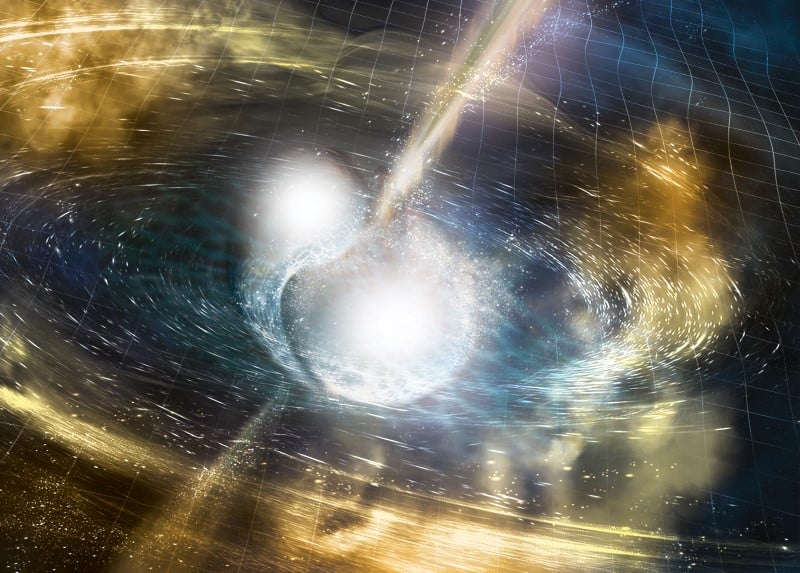Scientists have found evidence that tellurium, a rare element on Earth, is produced in neutron star mergers. This bolsters the theory that neutron star mergers are responsible for creating most of the heavy elements in the universe.
Heavy elements are those heavier than silver. They are created in a process called rapid neutron capture (r-process), which occurs in environments with a high density of free neutrons. Nuclei in these environments capture neutrons much faster than they can beta-decay, which produces a characteristic distribution of neutron-rich nuclei.
The abundance patterns in our solar system show clear evidence of r-process peaks, suggesting that this process is the origin of all heavy elements on Earth. It has been proposed that this process mainly occurs in matter ejected from neutron star mergers, producing an event called a kilonova.
In 2017, gravitational waves from a neutron star merger called GW170817 were detected. Astronomers then located a kilonova in a galaxy 130 million light-years away. Previous studies had found absorption signatures of strontium, cerium, and lanthanide elements in the initial spectrum of the kilonova, but the radiative properties of the later nebular phase were poorly understood.
A new study has modeled emission lines of several heavy elements in the nebular phase of the GW170817 kilonova. The model predicted a strong emission line at 2.1 micrometers from a forbidden transition in doubly ionized tellurium, exactly matching a previously unexplained feature of the kilonova’s spectrum. The strength of the emission line indicates that one-thousandth of a solar mass of tellurium was produced in the kilonova.
In a separate study, the James Webb Space Telescope (JWST) observed the exceptionally bright gamma-ray burst GRB230307A, which is thought to have been caused by a neutron star merger. The JWST observed the kilonova 29 and 61 days after the burst, and its spectrum showed the same 2.1 micrometer feature attributed to tellurium.
The fact that the JWST could detect the kilonova when no other telescopes could is a testament to its sensitivity. Scientists say that the JWST will be able to provide much more information about neutron star mergers and the heavy elements they produce in the future.
Conclusion
The discovery of tellurium in neutron star mergers provides further evidence that these events are responsible for creating most of the heavy elements in the universe. This is an important finding because it helps us to understand how our own planet and the solar system formed.
